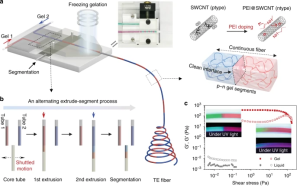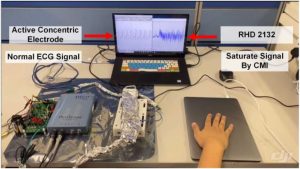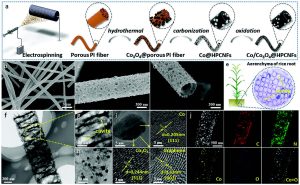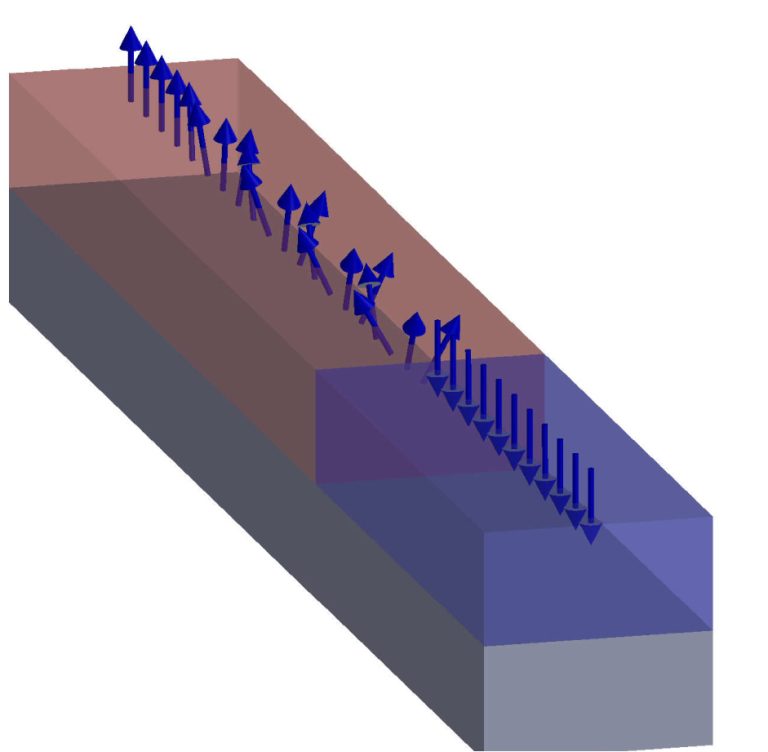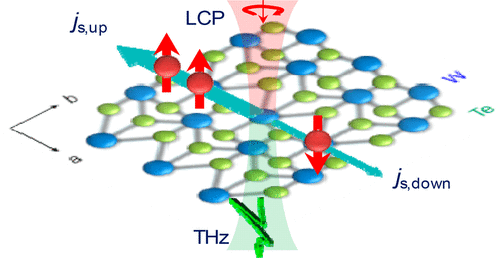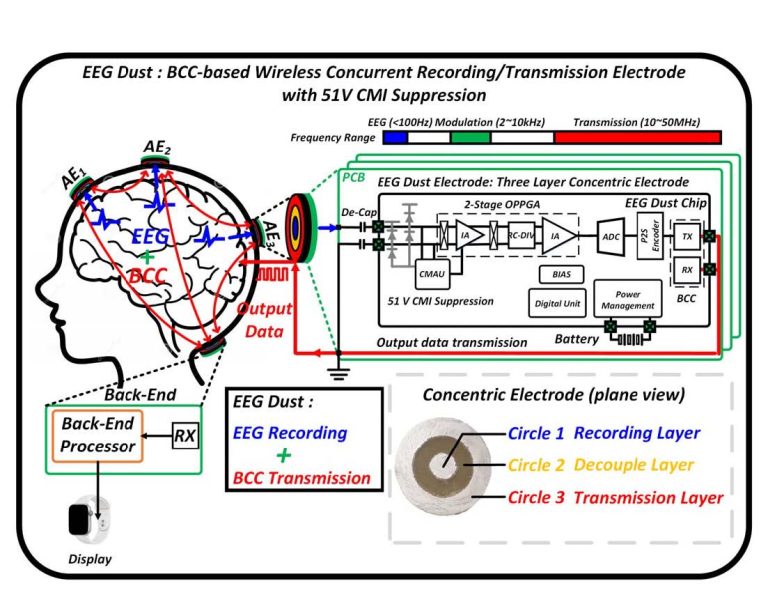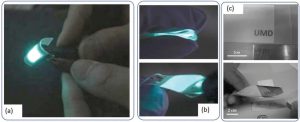Publication
- Facile and Scalable Electrospun Nanofiber-Based Alternative Current Electroluminescence (ACEL) Device

Alternative current electroluminescence (ACEL) can
be identified as an efficient light-emitting technique among a
number of different light emission methods. Open-air fabrication
capability of the ACEL technique outshines among a few other
advantages, whereas electrospinning has been widely identified as a
simple, open-air fabrication for nanosized fibers. Here, the authors
have combined these two techniques together and fabricated an
ACEL device with electrospinning for the first time. The role of
electrospinning is highlighted as a scalable fabrication technique to
achieve uniform dispersion of both phosphor (ZnS:Cu) and
dielectric (BaTiO3) particles. With a greenish-blue luminescence
(peak wavelength, 484 nm), the proposed device has achieved a
maximum brightness value of 88.55 cd/m2 and a maximum current
efficiency of 7.4 cd/A with only 1 kHz sinusoidal input signal. The uniformity of nanofiber mats was evaluated with SEM and EDS
analyses, TEM was used as a corroboration. The crystal structures of the active materials were confirmed with X-ray diffraction
(XRD) analysis as well. With the opportunities available in both electrospinning and optoelectronic field, this can initiate newer
prospects including but not limited to backlighting and smooth light emitting panels in display technology, surface emitting devices
in large-area luminescence applications, e.g., in advertising or architectural aspects, and even phototherapeutic applications as well.
Researcher/Author: Wanasinghe Arachchige Dumith Madushanka Jayathilaka, Amutha Chinnappan, Ji Dongxiao, Rituparna Ghosh, Thang Q. Tran, and Seeram Ramakrishna
ACS Appl. Electron. Mater. 2021, 3, 267−276; https://doi.org/10.1021/acsaelm.0c00838
Researcher/Author: Wanasinghe Arachchige Dumith Madushanka Jayathilaka, Amutha Chinnappan, Ji Dongxiao, Rituparna Ghosh, Thang Q. Tran, and Seeram Ramakrishna
ACS Appl. Electron. Mater. 2021, 3, 267−276; https://doi.org/10.1021/acsaelm.0c00838



